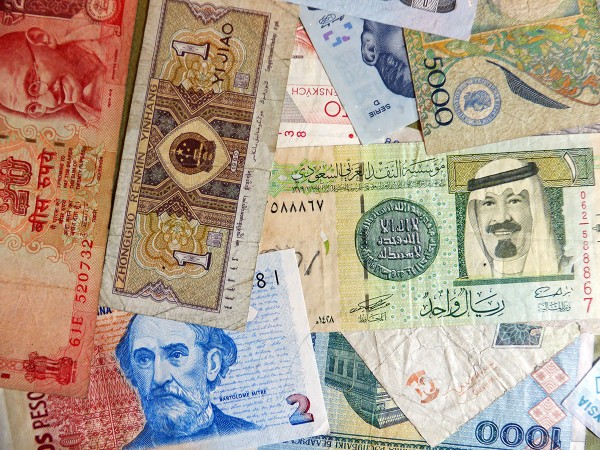What would Keynes say if he were alive today?
 We’ve considered Keynesian economics and policy in several blogs. For example, a year ago in the post, What would Keynes say?, we looked at two articles arguing for Keynesian expansionary polices. More recently, in the blogs, End of the era of liquidity traps? and A risky dose of Keynesianism at the heart of Trumponomics, we looked at whether Donald Trump’s proposed policies are more Keynesian than his predecessor’s and at the opportunities and risks of such policies.
We’ve considered Keynesian economics and policy in several blogs. For example, a year ago in the post, What would Keynes say?, we looked at two articles arguing for Keynesian expansionary polices. More recently, in the blogs, End of the era of liquidity traps? and A risky dose of Keynesianism at the heart of Trumponomics, we looked at whether Donald Trump’s proposed policies are more Keynesian than his predecessor’s and at the opportunities and risks of such policies.
The article below, Larry Elliott updates the story by asking what Keynes would recommend today if he were alive. It also links to two other articles which add to the story.
Elliott asks his imaginary Keynes, for his analysis of the financial crisis of 2008 and of what has happened since. Keynes, he argues, would explain the crisis in terms of excessive borrowing, both private and public, and asset price bubbles. The bubbles then burst and people cut back on spending to claw down their debts.
 Keynes, says Elliott, would approve of the initial response to the crisis: expansionary monetary policy (both lower interest rates and then quantitative easing) backed up by expansionary fiscal policy in 2009. But expansionary fiscal policies were short lived. Instead, austerity fiscal policies were adopted in an attempt to reduce public-sector deficits and, ultimately, public-sector debt. This slowed down the recovery and meant that much of the monetary expansion went into inflating the prices of assets, such as housing and shares, rather than in financing higher investment.
Keynes, says Elliott, would approve of the initial response to the crisis: expansionary monetary policy (both lower interest rates and then quantitative easing) backed up by expansionary fiscal policy in 2009. But expansionary fiscal policies were short lived. Instead, austerity fiscal policies were adopted in an attempt to reduce public-sector deficits and, ultimately, public-sector debt. This slowed down the recovery and meant that much of the monetary expansion went into inflating the prices of assets, such as housing and shares, rather than in financing higher investment.
He also asks his imaginary Keynes what he’d recommend as the way forward today. Keynes outlines three alternatives to the current austerity policies, each involving expansionary fiscal policy:
| • | Trump’s policies of tax cuts combined with some increase in infrastructure spending. The problems with this are that there would be too little of the public infrastructure spending that the US economy needs and that the stimulus would be poorly focused. |
| • | Government taking advantage of exceptionally low interest rates to borrow to invest in infrastructure. “Governments could do this without alarming the markets, Keynes says, if they followed his teachings and borrowed solely to invest.” |
| • | Use money created through quantitative easing to finance public-sector investment in infrastructure and housing. “Building homes with QE makes sense; inflating house prices with QE does not.” (See the blogs, A flawed model of monetary policy and Global warning). |
Increased government spending on infrastructure has been recommended by international organisations, such as the OECD and the IMF (see OECD goes public and The world economic outlook – as seen by the IMF). With the rise in populism and worries about low economic growth throughout much of the developed world, perhaps Keynesian fiscal policy will become more popular with governments.
Article
Keynesian economics: is it time for the theory to rise from the dead?, The Guardian, Larry Elliott (11/12/16)
Questions
- What are the main factors determining a country’s long-term rate of economic growth?
- What are the benefits and limitations of using fiscal policy to raise global economic growth?
- What are the benefits and limitations of using new money created by the central bank to fund infrastructure spending?
- Draw an AD/AS diagram to illustrate the effect of a successful programme of public-sector infrastructure projects on GDP and prices.
- Draw a Keynesian 45° line diagram to illustrate the effect of a successful programme of public-sector infrastructure projects on actual and potential GDP.
- Why might an individual country benefit more from a co-ordinated expansionary fiscal policy of all countries rather than being the only country to pursue such a policy?
- Compare the relative effectiveness of increased government investment in infrastructure and tax cuts as alterative forms of expansionary fiscal policy.
- What determines the size of the multiplier effect of such policies?
- What supply-side policies could the government adopt to back up monetary and fiscal policy? Are the there lessons here from the Japanese government’s ‘three arrows’?